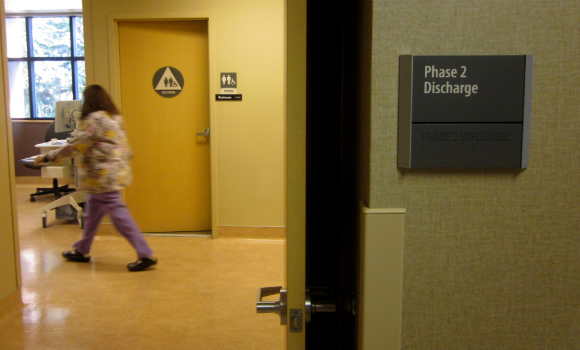
(Photo Credit: David Prasad/Flickr)
California will soon be facing another shortage. It’s not just water, but skilled workers.
In the next decade, the state will have to fill a projected gap of more than 1.5 million skilled workers with “some college” experience. In a recent report issued by the Public Policy Institute of California titled, “California’s Need for Skilled Workers,” those workers are defined as people who have some post-secondary education, such as a vocational certificate, an Associate’s degree or who have attended some college, but not received their Bachelor’s,
According to the report’s author, Sarah Bohn, to close this oncoming “skills gap,” the state needs more information so it can better invest in targeted training and education. Students also need more information, so they can make the choices that will lead to better and higher paying jobs.
“We talk a lot about the shortage of highly-educated workers, but it turns out that we’re also going to face a shortage of workers who have some training post high school, some community college or a two-year degree,” said Bohn.
These workers will be needed in the high-growth sectors of healthcare, healthcare support, protective services and many types of technicians among others. Bohn added, “My goal was in breaking down the different kinds of occupations and sectors to show and to highlight where there are better opportunities for students with just a community college degree because there are some fields and some occupations where having a certificate or an Associate’s degree pays off quite a lot compared to someone who just has a high school degree.”
The outcome of the report was no surprise to Dr. Alma Salazar, vice president of education and workforce development at the Los Angeles Area Chamber of Commerce. “Many of us who have been doing this work for a while, it is really the drum that many of our employers have been beating for a long time,” said Salazar.
The low supply of skilled workers makes doing business and expanding more difficult for those employers, like Mark Roberts, CEO of Springboard Biodiesel, a manufacturer in Chico.
“They’re hard to find but we’ve found some,” said Roberts, speaking to us at the Summit’s Capitol Day gathering. “We’re proud of our workforce. But it’s hard and I can see, if I had to immediately hire to double my company size in the next month, it would be impossible to do in my current zip code.”
The study predicts the shortage by comparing the percentage of workers estimated to have “some college” education by 2025 (29%) and the percentage of jobs in California that will need workers with the skills to fill them (36%). The gap makes it tough for employers looking for people who are trained with enough skills right off-the-bat.
“In a small business you need somebody to come in who can do something and has a well-rounded sort of approach, ability and capability set so that they can do other stuff and grow with the company,” said Roberts. “And so the only way to do that is if they come in with a skill set that is wider and not just so narrow, ‘I can do one thing.'”
The gap also represents a missed economic opportunity for people going into the workforce. By not knowing enough about how the path to well-paying, in-demand jobs doesn’t always mean a four-year degree, students lose out in the long run.
“Several years ago, a decade ago, it was this constant debate whether a young adult was college bound, whether or not they were on a career pathway and the truth of the matter is that employers are seeking prospective employees who have the strong base of both,” said Salazar.
This year, the state budgeted $50 million for career technical education, adopting a new “shared investment” funding model that will allocate the funds to regions for further distribution, instead of diffusing them among all community colleges. Also lawmakers included $250 million in the 2014-2015 budget for the Career Pathways Trust program, a work-based learning grant program. The California Economic Summit’s Workforce Action Team supported the initiatives and continues to advocate for long-term funding.
According to Salazar it is important that students know which areas of study will be most beneficial. “It’s basically to demonstrate and to allow prospective students and their families to make educated decisions about which college degrees, which pathways are going to yield the best employment possibilities.”
This is good news to Bohn who is very interested in student outcome and is “thinking about where the state is investing and where the colleges are investing their resources and encouraging policymakers to take the lens of the eventual economic success and well-being of the student.”
Showing students the lucrative career pathways available and boosting vocational programs across California will be essential to filling this skills gap. And, it appears that many interested parties are trying to lead the way.

